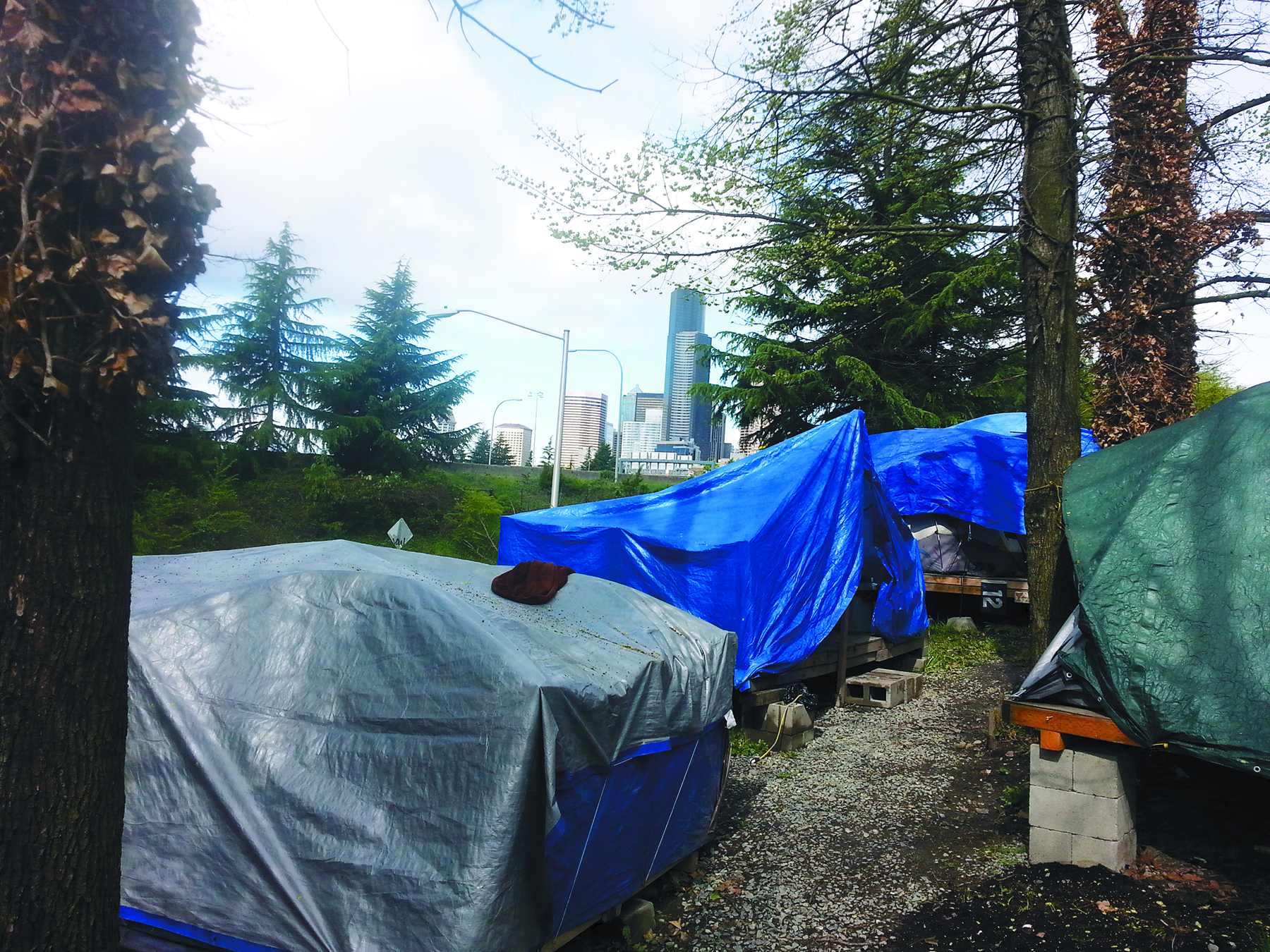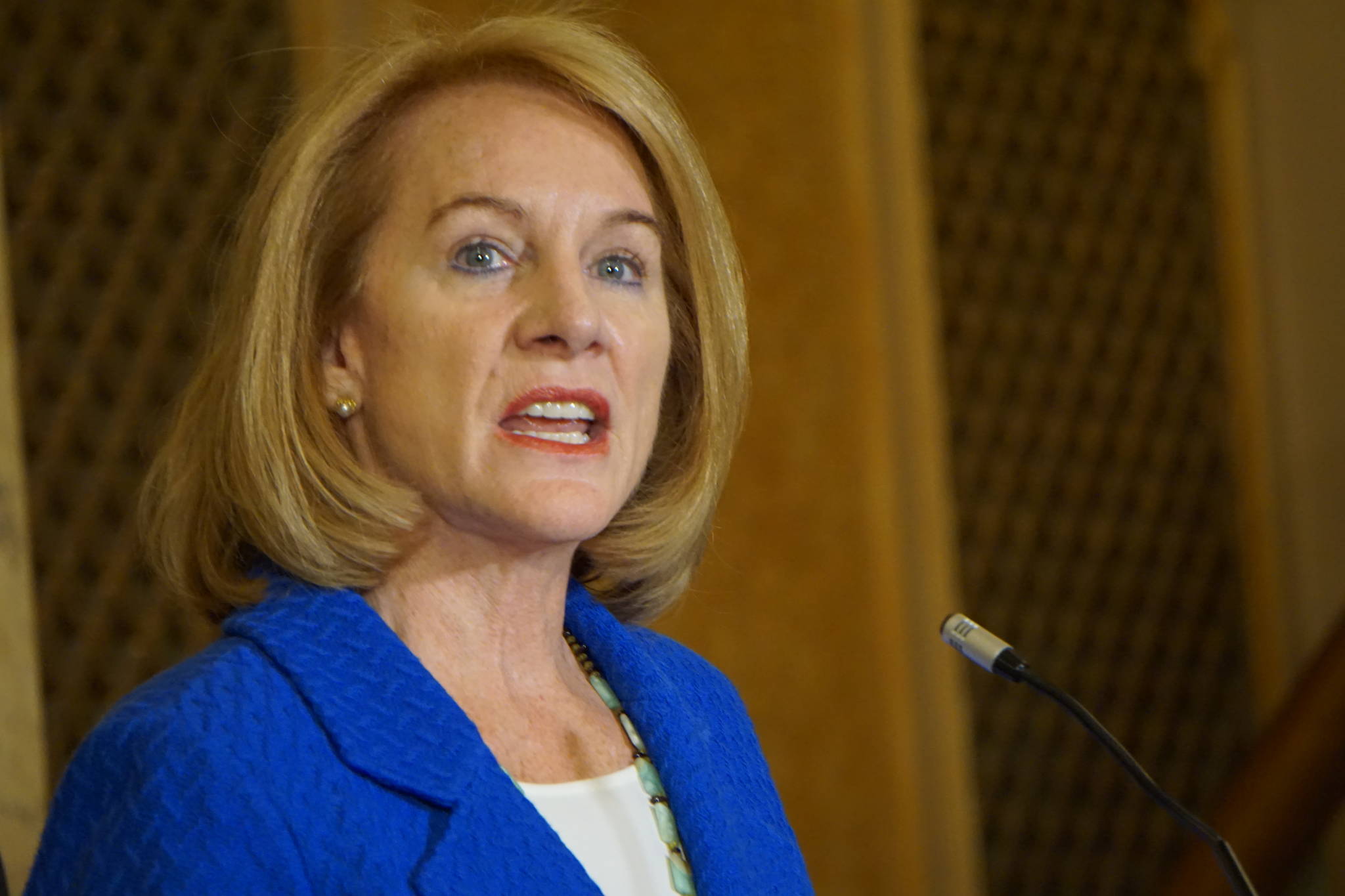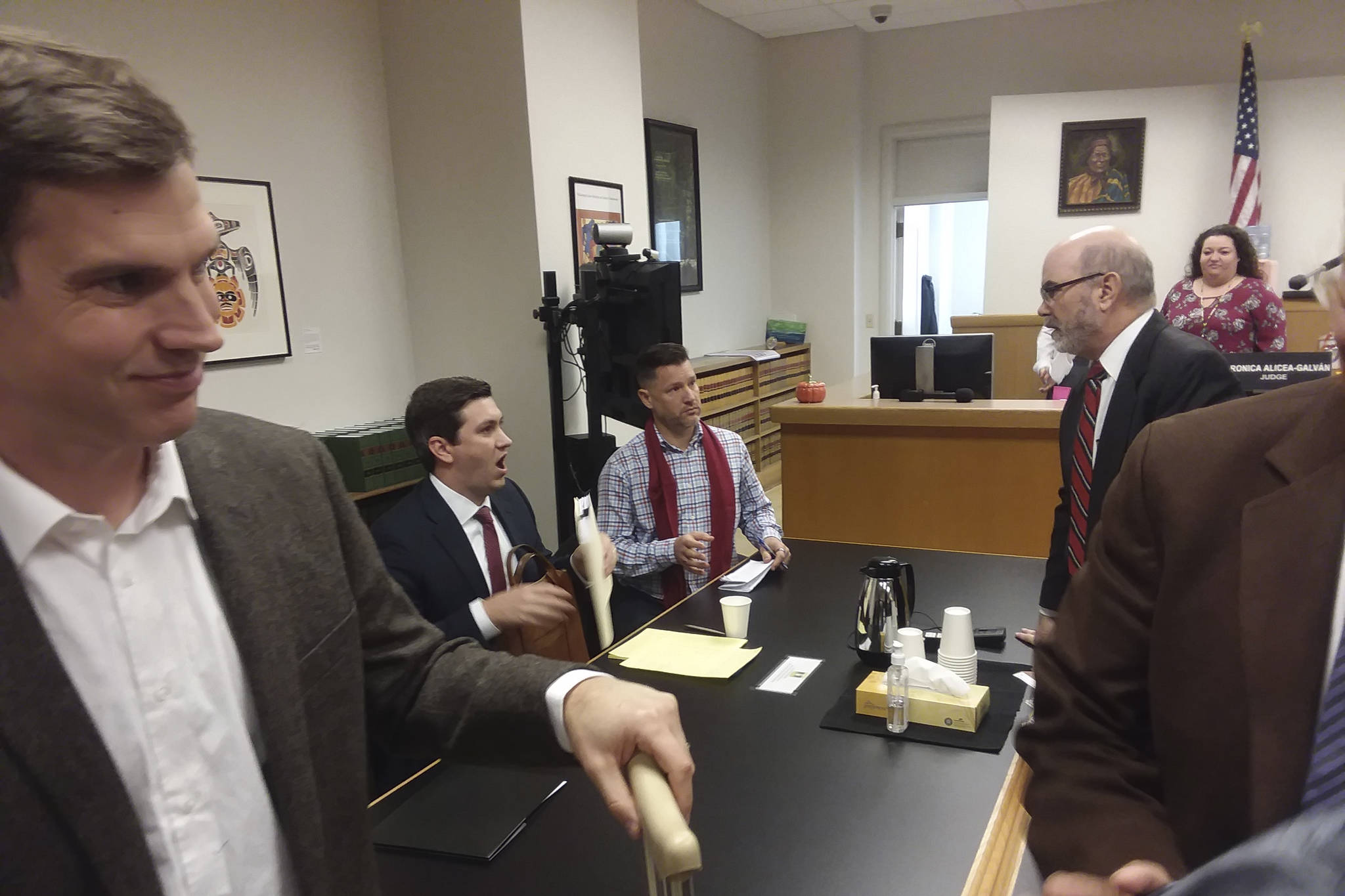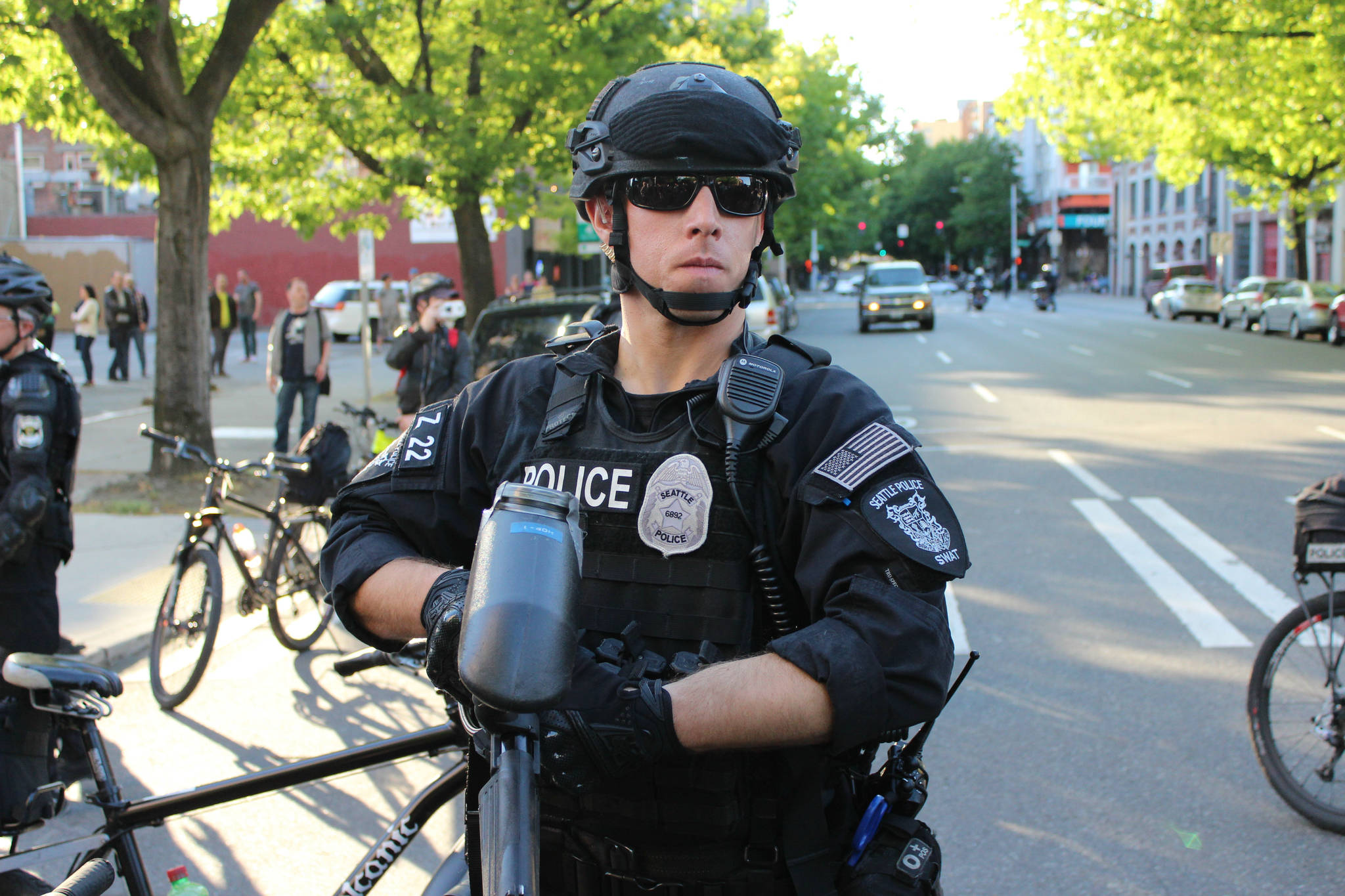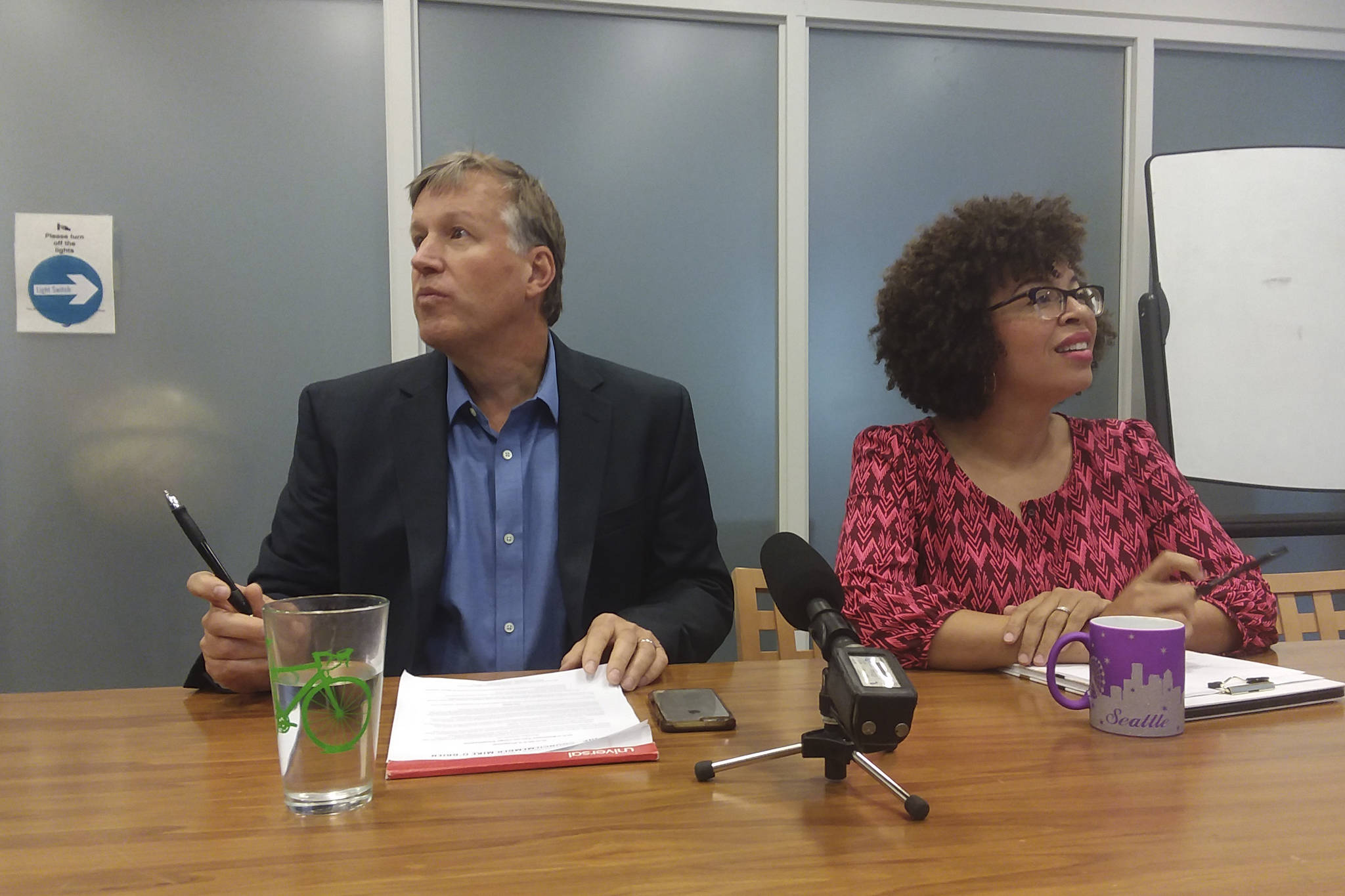“Three hundred more tents means that at least 300 more people will have shelter,” says Roger Franz. The adviser to, and resident of, Tent City 3 up in Shoreline is referring to new zoning rules, passed by the Seattle City Council last month and signed by Mayor Murray this past Friday, that will allow three new 100-person encampments, or tent cities, on Seattle public land.
Three hundred is a drop in the bucket compared to the 9,000-plus homeless in King County, more than 3,000 of whom were literally living on the street during the most recent one-night-count in January. Still, it’s nothing to sneeze at. That’s 300 people not sleeping in doorways or under bridges; 300 people who can leave their belongings behind when they go to work or job interviews; 300 people living in “a place where society sanctions your being,” as Chris Peil, a homeless resident of an existing tent city, puts it.
“If I didn’t have [an encampment], I’d be out there like everybody else: robbing, cheating, stealing. Especially from the government,” adds his neighbor William. “Everybody’s got their own story. And they’re all like assholes: they all stink.
“But,” he says, summing up what many Seattleites might like to forget, “we’re all here.”
Seattle’s had at least one encampment since 1993, according to Councilmember Nick Licata. The only formal tent city currently inside city limits is Nickelsville, a hilly series of tents and wooden shacks between the swooping on/off ramps of I-90 and I-5. But within the larger urban sprawl are four other formal tent cities of anywhere from 30 to 100 people, plus countless ad hoc encampments that ebb and flow wherever and whenever there’s space. The rules governing location, population size, and duration of stay for encampments in and around Seattle are slightly more complicated than the plot of Twin Peaks, but in general, non-religious encampments have been allowed up to 100 people for anywhere from a couple of months to a couple of years. (Religious hosts, thanks to a broad reading of the First Amendment, can do pretty much whatever they want.)
Nickelsville, home to Peil and William, began in 2008 as a field of bright-pink tents near the Duwamish river, though it has moved some 20 times since then. All that time it has stood as a confusing oasis of sustenance amid scarcity amid plenty—a community of mutual aid for people who are otherwise destitute, smack in the middle of the fastest-growing big city in America.
The Council’s zoning change creates a renewable “interim-use permit” good for double the duration of the existing “temporary-use permit” for non-religious sites, which allows six months maximum. Because of this change, it’s expected that three more such communities, of 100 people each, will likely spring up on vacant or underused city land by the end of the summer.
While encampments like Nickelsville offer a home of sorts, they’re not real housing as most Americans understand that term—and therefore, as anyone involved will tell you, not a permanent solution to Seattle’s homelessness crisis. Rather, encampments offer a kind of temporary Band-Aid—or, to use a popular metaphor, a “first step.” Example: “You need to basically do the first step, do it well, and then build on it,” says Licata, who proposed a similar encampments bill in 2013. “But the goal should be bigger things,” he adds.
Licata chalks up the newfound success of encampment legislation to the shifting political winds in Seattle. And like the issue of a $15 minimum wage, which defined 2013’s council and mayoral races, he thinks successfully harnessing those winds takes a combination of militance and glad-handing.
“I think the unrecognized partnership in this city . . . is between the mayor and Kshama Sawant,” muses Licata. “Kshama stokes the coals and Murray gets the engine running.” Or, to use a less flattering analogy: Murray is the carrot and Sawant the stick.
While the ordinance passed unanimously, the particulars of where to allow encampments remain controversial. The ordinance keeps the three new tent cities out of residential areas, but it also directs the Department of Planning and Development to conduct an impact study on potential encampment sites across the city.
Sawant successfully added an amendment making DPD look at all residential zones, while then-councilmember Sally Clark (who has since resigned to work at the University of Washington) unsuccessfully tried to exclude single-family residential areas (which constitute most of Seattle) from the impact study. For Sawant and homeless activists, this is a social-justice issue: They call limiting encampments to non-residential areas “redlining,” a term for discrimination that uses location of residence as a proxy for race or economic status.
For Clark, what’s at issue is efficient use of DPD resources. “For everything that you ask [DPD] to study, there’s something else that they’re not gonna study,” she says. It’s not that she opposes encampments in residential areas, she says, pointing out that the city already allows (and has hosted) such. Rather, she doesn’t think the city is likely to approve tent cities inside single-family neighborhoods anytime soon, so it doesn’t make sense to spend DPD resources researching their potential impacts.
Particulars aside, there’s broad consensus that encampments are not a permanent solution, and that the real problem lies in big, complex social issues like housing availability, wages, and social-services funding. Clark, Licata, and Sawant have all proposed some kind of publicly assisted affordable housing, as do Franz and likely many of his neighbors at Tent City 3.
The problem, of course, is how to get there—how to pay for it, who’ll administer, and where to camp until it’s all figured out.
cjaywork@seattleweekly.com
